The hardest part about a sequel is that you lose the element of surprise. People already know what the game is like from the first title, so few people expect drastic changes to the formula. They expect some improvements over what didn't work mechanically, and anything new feels like a bonus, but if you can replicate just about everything else, that's good enough for most people. Revenge of the Savage Planet isn't immune to this issue, and while the game doesn't quite hit the mark in some areas, it hits enough of the game's previous highs to make this a solid experience.
Initially, the story mimics the first game. You are an unnamed pioneer employed by the Alta Corporation, and you're tasked with surveying new planets and, if they're inhabitable, establishing a colony so humanity can expand beyond Earth. However, everything seems to have gone awry. Your ship has essentially disintegrated, and your supplies have been strewn across the four planets of the known system. Worst of all, you've been laid off from the company while you were in cryosleep. Fortunately, you still have a robotic companion and a 3D printer, and your habitat on the first planet is still intact. Without a solid plan, your main goal is to find a way to travel to the other planets in the system to recover all of the supplies you should've had upon landing. It doesn't take long before you're contacted by Martin Tweed, the ex-owner of Kindred Technologies, the company that was bought out by Alta. Bored of his life in retirement and spiteful of how Kindred was essentially dissolved, he wants to use you as a proxy to uncover the misdeeds of Alta and discover a way return to Earth to take down your former company.
When compared to the first game, the story's tone seems more serious. Part of that comes from the general revenge plot, but part of it stems from the state of companies in real life. The idea of corporations gobbling up smaller entities and creating experimental projects to casually dismiss people changes the vibe of the game because this seems to occur just about every week nowadays. There's the sense that the common folk are too powerless to stop a machine that lives to grow at all costs, and the thought that you can enact payback against those who wronged you (at least in game form) gives the game more "bite" when compared to the corporate incompetence angle from the first game. With that said, the game goes about this in a darkly humorous way, such as you filling out surveys where the only right answers benefit the company, or finding out that the explorers before you were chosen because they suggested things like bringing back bagels for Tuesdays.
Speaking of humor, the game still bathes itself in it, but the types of humor is more varied. The live-action Adult Swim-style humor is still present in the various ads in the habitat, like an offroading mansion and burgers that constantly squirt juice. The descriptions for the flora and fauna on each planet also have a less-than-serious tone, and the callouts spouted by your companion tend to be hilarious due to the viciousness of the delivery in an upbeat voice. One part that doesn't work is the highly referential Rick and Morty/Family Guy-style humor. Hack a terminal, for example, and your companion talks about how good the movie "Swordfish" was. Similar jokes fall flat, and while the number and variety of jokes make for a humorous time, the game isn't as funny as the first title.
The core gameplay loop hasn't changed much in the four years since the debut of the series. This is an exploratory adventure game where a good chunk of your time is spent wandering around the world while scanning everything in sight, collecting elements, and uncovering chests for more upgrades and tools. Like a Metroidvania, making and discovering these tools encourages you to go back and forth between the different areas to progress through the story and open up previously inaccessible areas for exploration or completely different planets altogether. It also means having to revisit your base to craft things.
The most obvious change compared to the first title comes from the gameplay perspective. Whereas the first game was played completely from a first-person perspective, this title aims for a traditional third-person, behind-the-back perspective. That changes nothing when it comes to the shooting portion, but it helps immensely with platforming since the perspective makes jumping feel more natural. That is very important, since this game emphasizes platforming, especially since there are very few borders on each planet. The world also gives the player a number of vertical surfaces to force your way up the sides of cliffs, and it won't look like you're breaking the game.
Beyond this, there are a few other gameplay mechanics that are either new to the series or further modifications of what was previously available. The grappling hook has been changed into a whip, and it's used less like a weapon and more like a tool, as you can break apart some substances. You can still use it to grapple onto points, and upgrading it allows you to grapple onto any surface, further allowing you to practically go anywhere you want. The whip can also be used as a lasso; one of the new things you can do in the game is capture creatures so they can be sent back to your base for research. Some of the easier creatures can be obtained by simply grabbing them with the lasso and pulling them close until a warp hole appears, but others need to be stunned before they can be captured.
The mechanic works fine, but it does have problems. To stun a creature, you need to scan them and identify their weak spot. You have to shoot their weak spot enough to stun them without firing too many shots that would outright kill them. Sometimes this is fine, such as when you need to shoot a creature at their knees to stun them. Other times, the information you're given is wrong, such as when you're told to shoot a creature at their mouths when you actually need to hit the teeth or when you're asked to hit a very tiny spot on an armored creature and there's rarely an opportunity to hit that shot without killing the creature. These issues don't result in a complete blocking of progress, but they are frustrating enough that you'll be glad that you only have to go through this once per creature.
Combat is still present, including a few boss fights, and the only thing resembling a traditional weapon is an energy pistol that can be upgraded with the basics, like more damage, a charged shot, and the ability to vent for faster cooldown times. As mentioned before, the whip is more of a tool, but it becomes useful when trying to knock back enemies to give yourself space to fight. Parrying shots is also something you can do, and the parry window isn't too tight, so anyone can do it with ease.
The newest tool you can work with is a hose, and it's multipurpose, so you'll rely on it often. By default, this is a portable water hose, and you'll get a bit of a Powerwash Simulator vibe, since you'll mostly use it to clean up the various slimes that affect your mobility and burn you in the case of lava slime. However, you'll quickly discover that the water hose can kill a few enemies and stun others, and its quick refill time ensures that you'll experiment with it often. Upgrade the hose, and you can shoot various liquid types, but you'll need to obtain them from different sources; they don't automatically refill like the water does. The lava goo is essentially your bomb, while purple goo can spread electricity, and green goo can explode when combined with fire.
The combination of exploration and combat makes for a truly engaging experience, and it's difficult to stop playing Revenge of the Savage Planet. The mobility makes exploration feel fast, so you wouldn't mind traveling somewhere on foot versus using a transporter. The various tools let you lay down traps or create scenarios where creatures fight one another or cause catastrophic situations with little effort on your side.
The experience does have some flaws, though. This is Metroidvania influenced, so enemies respawn when you move away from an area for a while. It can be an annoyance to go through the same tough fight multiple times, but it means that you can use this to farm materials, since elemental deposits also respawn. The more annoying aspect comes from switch resets when you completely warp out of an area. That doesn't happen too often, but it can occur when you find the final switch for a box while also stumbling upon a secret transport spot and opt to transport instead of opening the newly unlocked box. One final annoyance comes from the fact that you can't take any goo with you from planet to planet, so you'll always have to hunt down spots to refill your goo reserves. It wouldn't be so bad if it weren't for the fact that your NuGlob reserves don't suffer from resets during interplanetary travel.
The game features online co-op play, and just like before, the online performance is quite good, with matches connecting quickly and no signs of lag. The new tools mean there's more opportunity for crafting hilarious scenarios, and the game accommodates that well. The most interesting aspect of co-op is the fact that it can be done locally in split-screen mode. That's a rarity in this space, and the game runs perfectly, almost making this title an instant must-have if you crave playing with others locally versus over the internet.
Graphically, Revenge of the Savage Planet looks quite nice but very stylized. The creatures you face are still weirdly designed, and while some of them are cute, there are a few that don't look so impressive. They look normal, except for the fact that they may stand upright. One creature even looks like the Pokemon Scyther with a few changes to make them look different enough to not be an outright copy. Your character looks fine, albeit also stylized with an outsized helmet, but their animations make them stand out. Everything from running to falling from great heights has exaggerated movements, so it looks cartoony. There's a tiny bit of restraint, so it doesn't look too extreme. The environments are big and colorful, and while there is detail pop-in for some objects, it's done without any stuttering. All of this comes at a price, and that is the heavy use of upscaling to keep temperatures at bay. When we played on a rig with a RTX 5090, bumped all of the settings to Epic, and used TSR at 100% scaling, the game ran without a hitch in frame rate, but the system fans were definitely audible.
Compared to the previous title, the audio is pared back, and this is most notable with the music. The game relies heavily on ambient noises to fill out the soundscape, and music only kicks in during a fight. The few tracks are good, but they're much different from the somewhat folksy vibe of the first game, so the music stands out less. The effects are fine, but the enthusiastic delivery of the voices sells the game's oddball vibe.
Steam Deck users will find the game experience to be less than ideal. The game runs at the device's native 1280x800 resolution, but there are no graphical options to change. The result is a game that looks quite blurry with artifacting and a little ghosting, a telltale sign of the old FSR being used possibly in performance mode. The frame rate fluctuates between 15fps-25fps, and this is certainly a case where you can feel the frame rate affect control responsiveness. As far as battery life goes, you're looking at around 90 minutes of play from a full charge with the system fan running at full tilt. In short, the game is playable on the Deck, but you'll want to play on a more powerful rig instead.
In the end, Revenge of the Savage Planet is a good follow-up to Journey to the Savage Planet. The concept of exploring new, absurd worlds remains novel, while the expanded tool set and mobility tweaks strengthen the gameplay. The worlds are large and packed with loads to discover, and the game offers up a good amount to do even after you've seen the credits for the first time. For those who love exploring, Revenge of the Savage Planet is well worth checking out.
Score: 8.0/10
More articles about Revenge Of The Savage Planet


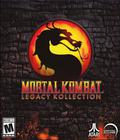
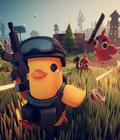

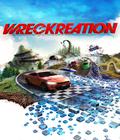
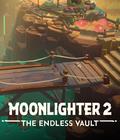
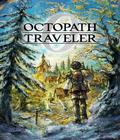
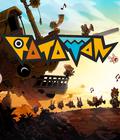
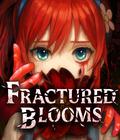

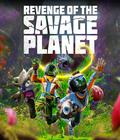 Revenge Of The Savage Planet is an upbeat, satirical action/adventure sci-fi game.
Revenge Of The Savage Planet is an upbeat, satirical action/adventure sci-fi game.





















